COMPLETELY uninhabited by 1953, the Blasket Islands off Kerry have been the centre of much fascination for decades.
The harsh nature of life on the Atlantic archipelago off the coast of Co. Kerry meant the Government evacuated the residents onto the mainland in the 1950s, however many stayed on the peninsula in sight of their former home.
The subject of much anthropological and linguistic studies due to their isolation and exclusively Irish-speaking population, the islanders were often visited by many writers at the turn of the century.
As a result, a literary trend called Blasket Literature began, featuring renowned autobiographical works such as An tOileánach by Tomás Ó Criomhthain and Peig by Peig Sayers.
Now a new book, Dingle and its Hinterland: People, Places and Heritage by Felicity Hayes McCoy and Wilf Judd, features the Blasket Islands and its people.
The book explains the archipelago's history and includes photos of the island before its evacuation.
See the incredible photos here...
Peig Sayers with two visitors to the island, Niamh (Martha) Nic Gearailt and Helen Killeen
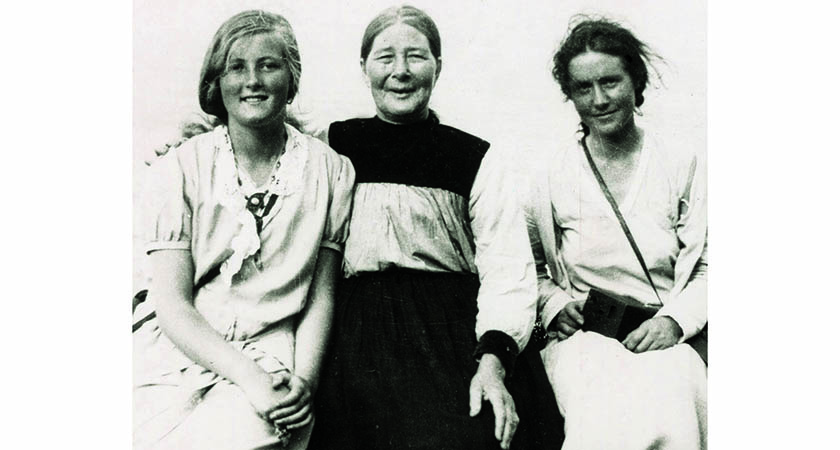 (Picture: Courtesy of OPW Blasket Centre, taken from Dingle and its Hinterland: People, Places and Heritage by Felicity Hayes-McCoy with Wilf Judd, published by The Collins Press, 2017)
(Picture: Courtesy of OPW Blasket Centre, taken from Dingle and its Hinterland: People, Places and Heritage by Felicity Hayes-McCoy with Wilf Judd, published by The Collins Press, 2017)Boys on Great Blasket Island in the early 20th century using donkeys as pack animals
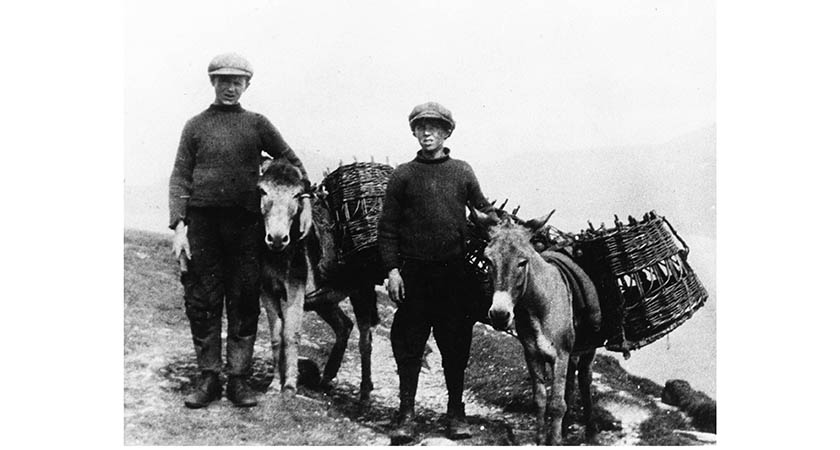 (Picture: Courtesy of OPW Blasket Centre, taken from Dingle and its Hinterland: People, Places and Heritage by Felicity Hayes-McCoy with Wilf Judd, published by The Collins Press, 2017)
(Picture: Courtesy of OPW Blasket Centre, taken from Dingle and its Hinterland: People, Places and Heritage by Felicity Hayes-McCoy with Wilf Judd, published by The Collins Press, 2017)Schoolchildren photographed in 1935, outside the island's national school
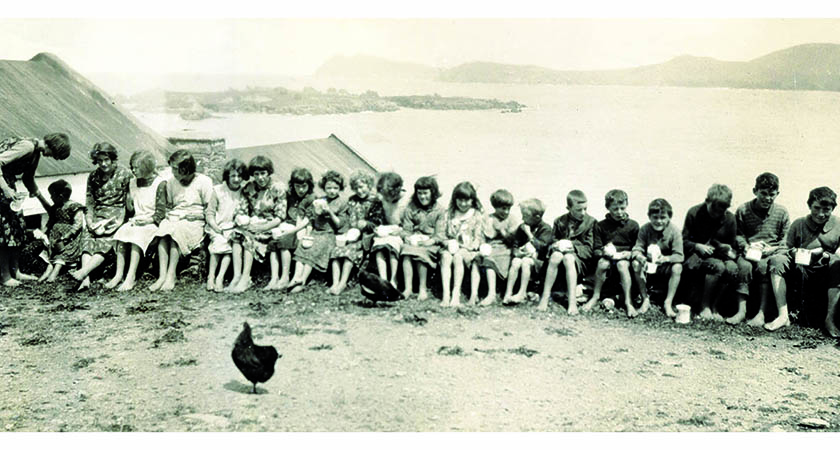 (Picture: Courtesy of OPW Blasket Centre, taken from Dingle and its Hinterland: People, Places and Heritage by Felicity Hayes-McCoy with Wilf Judd, published by The Collins Press, 2017)
(Picture: Courtesy of OPW Blasket Centre, taken from Dingle and its Hinterland: People, Places and Heritage by Felicity Hayes-McCoy with Wilf Judd, published by The Collins Press, 2017)Traditional stone dwellings on Great Blasket Island, where visitors were accommodated so they could share the communal way of life
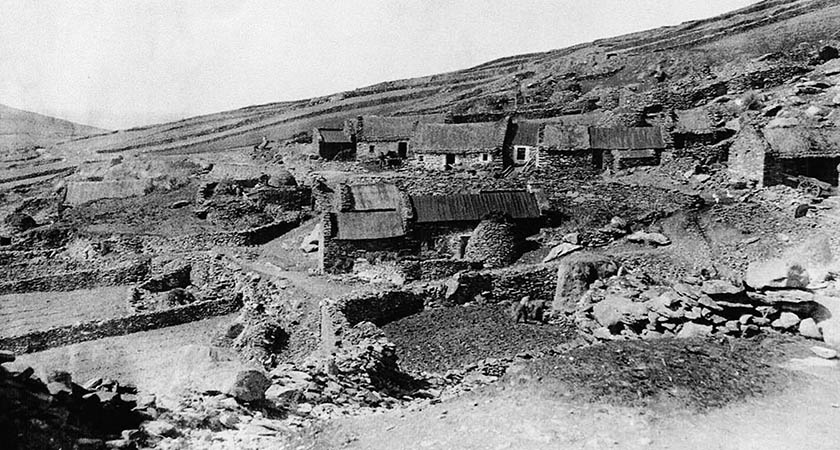 (Picture: Courtesy of OPW Blasket Centre, taken from Dingle and its Hinterland: People, Places and Heritage by Felicity Hayes-McCoy with Wilf Judd, published by The Collins Press, 2017)
(Picture: Courtesy of OPW Blasket Centre, taken from Dingle and its Hinterland: People, Places and Heritage by Felicity Hayes-McCoy with Wilf Judd, published by The Collins Press, 2017)The village on Great Blasket Island before the 1953 evacuation
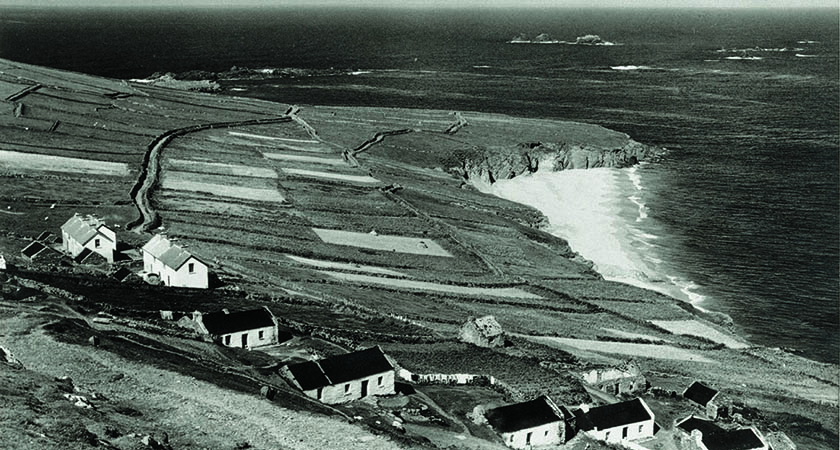 (Picture: Courtesy of OPW Blasket Centre, taken from Dingle and its Hinterland: People, Places and Heritage by Felicity Hayes-McCoy with Wilf Judd, published by The Collins Press, 2017)
(Picture: Courtesy of OPW Blasket Centre, taken from Dingle and its Hinterland: People, Places and Heritage by Felicity Hayes-McCoy with Wilf Judd, published by The Collins Press, 2017)The cliff path to Dún Chaoin as it is today. Apart from infants, the dead from Great Blasket Island were brought across to the mainland, and carried up the Dún Chaoin path to be buried
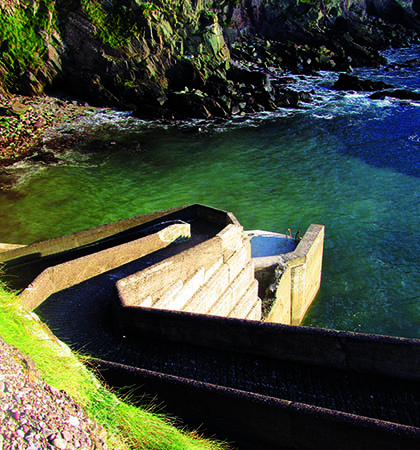 (Picture: Dingle and its Hinterland: People, Places and Heritage by Felicity Hayes-McCoy with Wilf Judd, published by The Collins Press, 2017)
(Picture: Dingle and its Hinterland: People, Places and Heritage by Felicity Hayes-McCoy with Wilf Judd, published by The Collins Press, 2017)Tomás Ó Criomhthain, the author of An tOileánach (The Islandman) in the early twentieth century
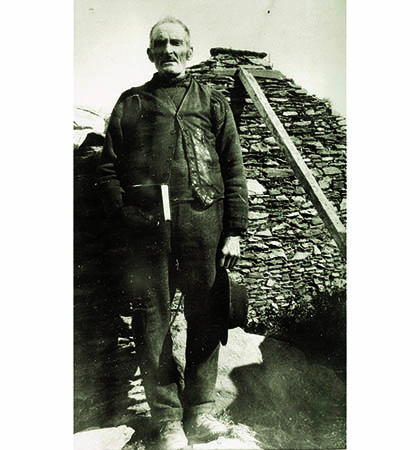 (Picture: Courtesy of OPW Blasket Centre, taken from Dingle and its Hinterland: People, Places and Heritage by Felicity Hayes-McCoy with Wilf Judd, published by The Collins Press, 2017)
(Picture: Courtesy of OPW Blasket Centre, taken from Dingle and its Hinterland: People, Places and Heritage by Felicity Hayes-McCoy with Wilf Judd, published by The Collins Press, 2017)
